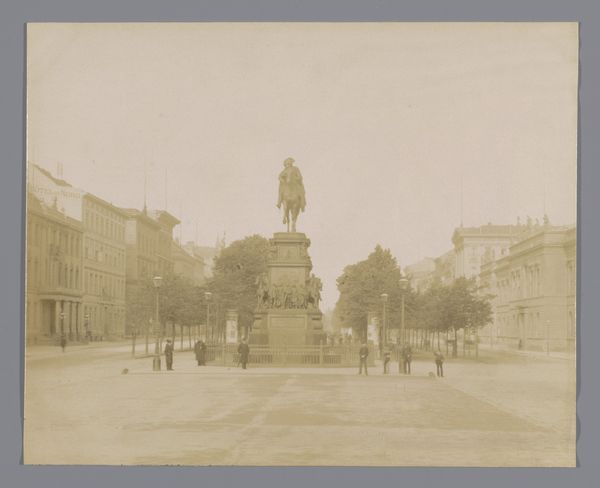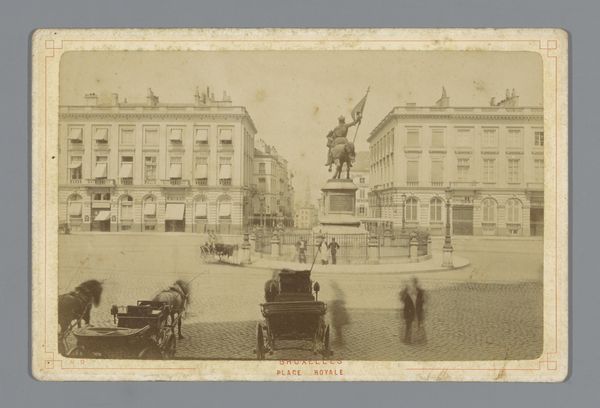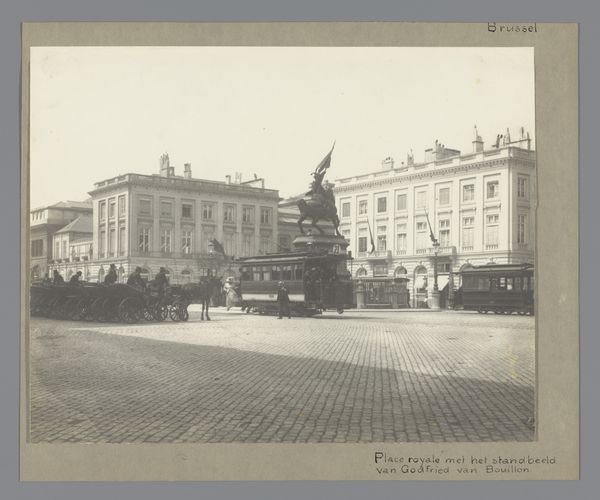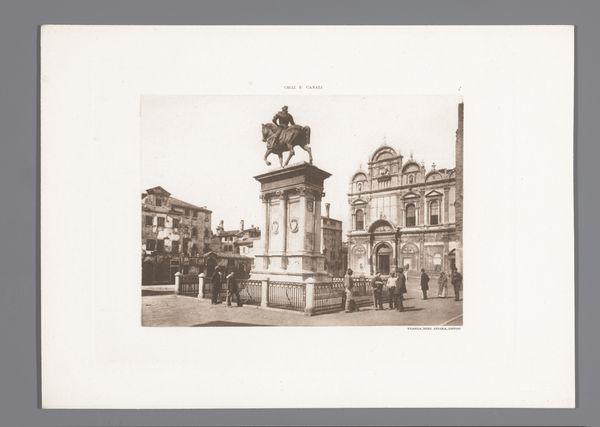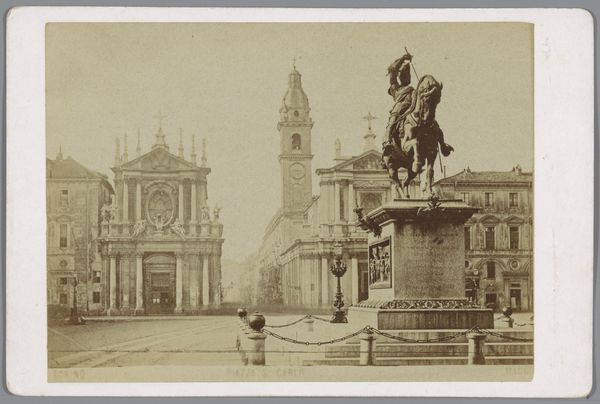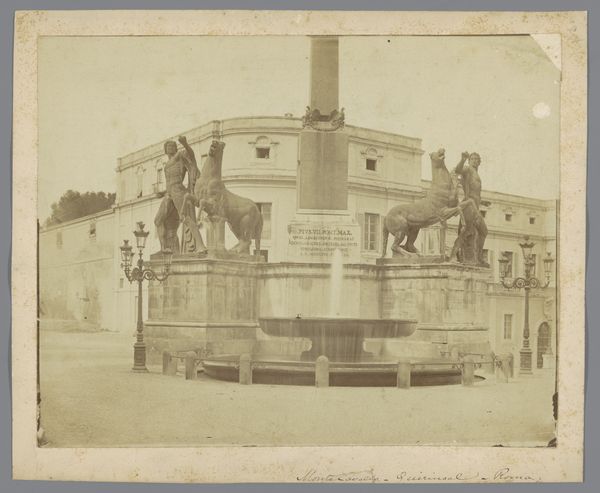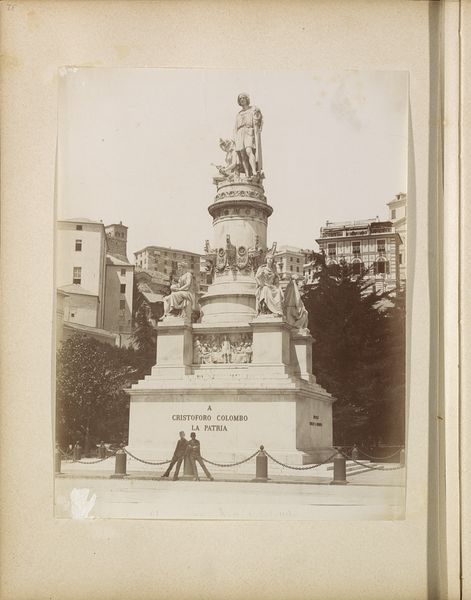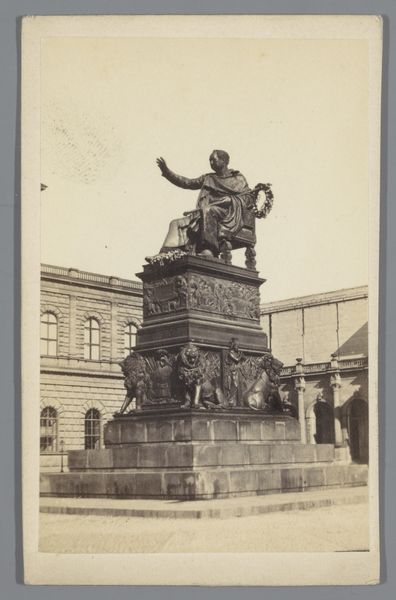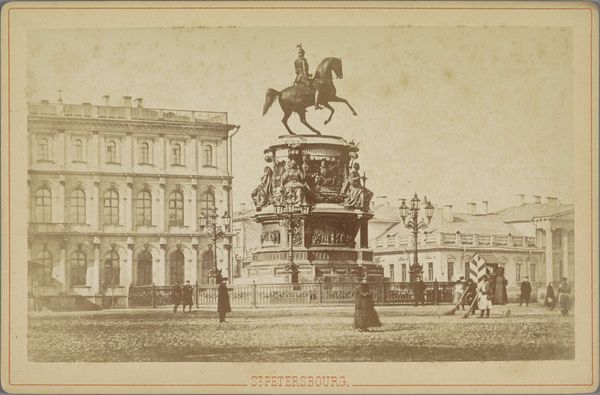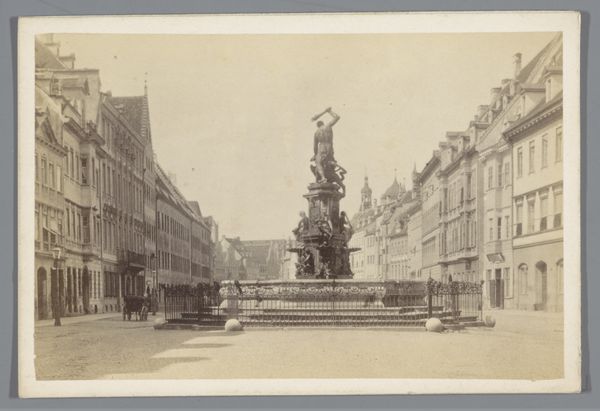
Dimensions: height 62 mm, width 101 mm
Copyright: Rijks Museum: Open Domain
Curator: At first glance, this evokes a profound sense of civic pride, doesn't it? An old world square filled with movement but anchored by a classical sculpture. Editor: Exactly. We’re looking at a photograph titled "Statue of Schiller on Schillerplatz in Mainz, Germany," dating from sometime between 1862 and 1885. It depicts exactly what the title says: a bronze statue of Friedrich Schiller. Curator: The use of bronze gives the sculpture permanence and nobility. Bronze casting itself—it's such an ancient technique. The labour involved and the material cost speak to the high regard society held for Schiller, a great German poet and playwright. Editor: Absolutely. It's strategically positioned in a public square, thereby creating a focal point for civic identity and national consciousness. Monuments such as these shaped the visual landscape of 19th-century cities and underscored a city’s cultural standing. Think about the social role of art in forming collective memory and affirming particular values. Curator: You can practically feel the bustling life around the statue—the passersby, the children. The photo is a slice-of-life snapshot, though somewhat staged perhaps, emphasizing a community benefiting from the high culture symbolized by the statue. Editor: Precisely! Public monuments are rarely, if ever, neutral. The choice of Schiller, a proponent of freedom and idealism, and the statue’s location and unveiling were political acts contributing to the creation of a shared German cultural heritage. Curator: And look at the other details; it gives context to how they built these squares during that period and to how life took place there. A testament to design, craftsmanship, and everyday lives all intertwined. Editor: It makes one contemplate the values enshrined in public art, the power of civic space, and the stories we tell ourselves about who we are as a community and nation. Curator: It really is about how materials, method and labour serve specific purposes, and ultimately the kind of place this makes it as well, so well illustrated through that period. Editor: An amazing window into not only artistry, but urbanism and how people made places.
Comments
No comments
Be the first to comment and join the conversation on the ultimate creative platform.
